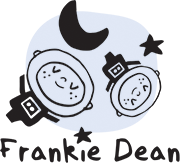
10 Child Safety Issues Every Parent Should Know

Every day children get hurt, and knowing what to look for can prevent serious injury. Here are some of the most common safety issues that every parent should know.
- Child Safety Seats - Update your knowledge about the most updated safety. LATCH (Lower Anchors and Tethers for Children) is the newest safety installation system for cars. Designed with the purpose of standardizing the way child safety seats are attached to vehicles,1 this innovation helps to assure the safety of children. When properly used, child safety seats and safety belts can save lives.2 In fact, studies have shown that during a collision, these seats reduce the risk of death by 71% for infants and 54% for toddlers.3
- School Bus Safety - More than 22 million students nationwide, ride on school buses. Statistics from the National Highway Traffic Safety Administration’s Fatality Analysis Reporting System (FARS) and General Estimates System (GES) show that most children injured by school buses are not even riding inside them! Instead, children suffer injuries when boarding or exiting the bus because they are in places that are not visible to the driver. Here are some tips: Always cross the street in front of the bus. Keep aisles clear (book bags should be on laps). Stay away from bus’ rear wheels at all times. Hold the handrail when going up and down the steps. Do not stand up when the bus is moving. Never stick hands, arms, or head out of the bus window. Stay away from the street when waiting for the bus and only approach when the bus is at a full stop, and the door is open.
- Helmets - all children should wear thick shock-absorbing helmets when riding a bike, skateboarding, skating, or riding a scooter and should be positioned low and not titled back. All these activities are considered dangerous to children unless the protective gear is worn.
- Amusement Parks and Carnivals - many rides can be dangerous if they are not appropriate for the child’s age and size. Instruct your children to always follow the rules of the ride operator for safety reasons. Officials estimate that 8,000 children, ages 14 and under, become injured because of using poor judgment or behaving improperly on the rides.4
- Playground Hazards - Each year, more than 200,000 preschool and elementary school-age children are injured from falling while using playground equipment.11 Monkey bars are the biggest risk factor, and many experts want them removed from playgrounds. Each year more than 200,000 preschool and elementary school-age children are injured from falling while using playground equipment.5
- Household Hazards - babies love to climb on furniture and get into cabinets. It is imperative that all obstacles be removed, all chemicals be out of reach for children or have safety locks on the cabinets. You should also have the phone number for poison control on your cell phone in case of emergency: 1-800-222-1222.
- Guns - if you own a gun, make sure it is locked away and unloaded and out of reach from children. It is also important to educate your child pertaining to guns if they visit a friend and see a weapon teach them to leave immediately and tell a parent.
- Safe Eating - Eating food can be a choking hazard. Choking is the lead cause of death in children under. 5 Parents should cut carrots and grapes into small particles and teach your children the importance of “safe eating”. They should eat while sitting down, not running or walking. It is also essential to take a CPR course to prepare you or a caregiver for an emergency. 6
- Safe Sleeping - SIDS (Sudden Infant Death Syndrome) is blamed when a baby dies from unknown causes. In 1992 SIDS death was reduced 50% when babies were put to sleep on their back (rather than their stomach). 7
- Stranger Warnings - Sometimes, it is not just a stranger that poses a problem. Parents should instruct their children about the real dangers that exist and saying “no” is appropriate in certain circumstances. Require that your child gets approval by a parent, trusted teacher or guardian before speaking to a stranger or adult acquaintance, going anywhere with anyone accepting anything, or getting into a car.
1. Consumer Product Safety Commission. http://www.cpsc.gov/repscpub/pubs/5036.html
2. See CT Safe Kids-Keeping Your Grandchildren Safe & Sound.
3. IBID
4. Safe Kids USA: Preventing accidental injury. Press Releases, Amusement Park Safety. http://www.usa.safekids.org/tier3_cd.cfm?content_item_id=25931&folder_id=300
5. Research Injuries. http://www.playgroundsafety.org/research/index.htm
6. Emergencies-Kids Health. http://kidshealth.org/parent/firstaid_safe/emergencies/cpr.html
7. Safe Sleep for my Grandbaby. http://www.firstcandle.org/FC/PD3/safe%20sleep%20for%my%grandbaby.pdf
Reference: https://www.globelifeinsurance.com/article/Top-Ten-Child-Safety-Issues

